

 The Accurate Reloading Forums
The Accurate Reloading Forums  THE ACCURATE RELOADING.COM FORUMS
THE ACCURATE RELOADING.COM FORUMS  Other Topics
Other Topics  Recipes for Hunters
Recipes for Hunters  Chokecherry Syrup
Chokecherry SyrupGo  | New  | Find  | Notify  | Tools  | Reply  |  |
| one of us |
Chokecherry Syrup Late summer marks the return of a northern treasure - the chokecherry. 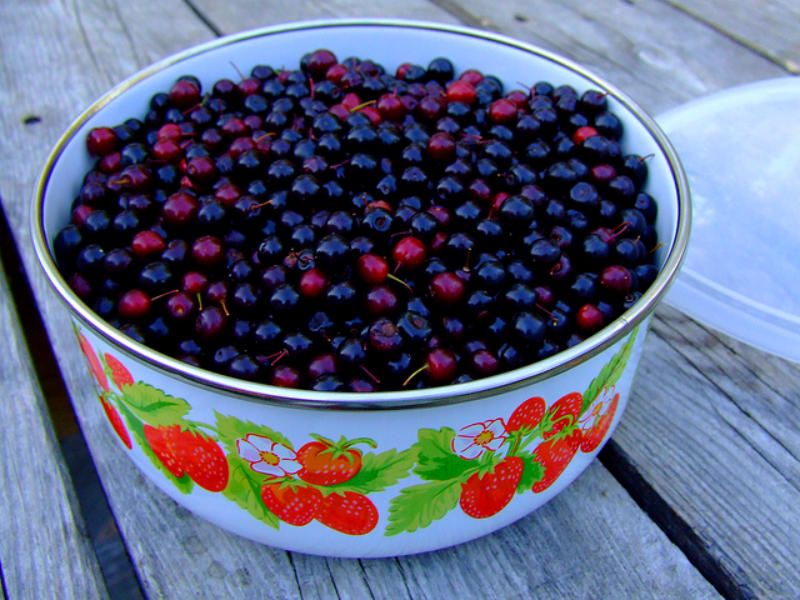 Photo Credit: https://c1.staticflickr.com/5/...717_a5978af034_z.jpg I love chokecherries, and have loved them for as long as I can remember. In fact, When I lived for a few years in Lewistown, Montana, one of my favourite times of the year was the Chokecherry Festival, held in early September. 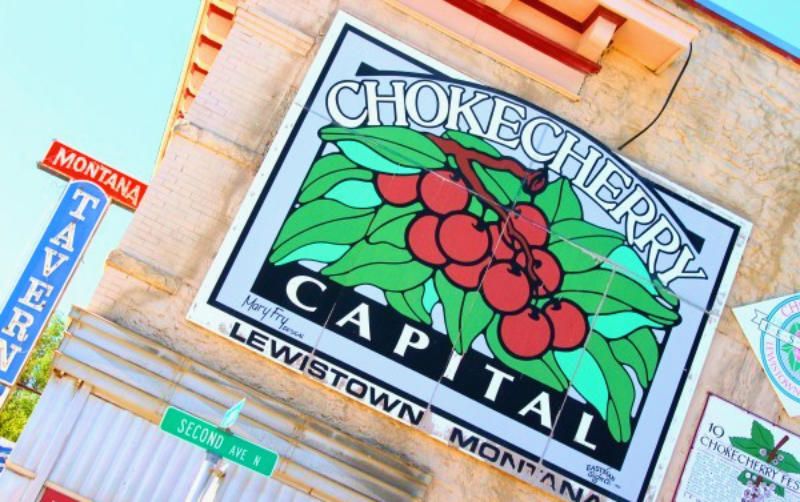 Photo Credit: http://www.anauthenticlife.com...2012/09/IMG_6899.jpg Those of you not living in the northern United States or southern Canada are probably asking, what is a chokecherry? Well, it’s hard to describe, even though I’ve lived with them all my life. The are small, dark-purple, berry-like fruits growing in clusters on bushes that can be found just about anywhere in the northern USA, east of the Rocky Mountains - or in southern Canada. Along roadsides, in meadows or even in back yards, these hardy shrubs are easily recognised by their white blossoms in the spring, and their locations are carefully marked against the day that the cherries ripen later in the year. 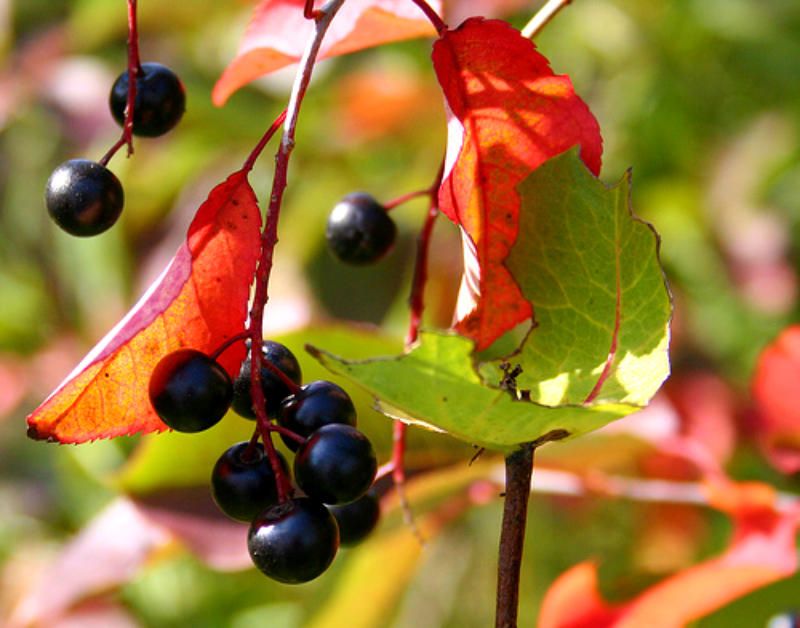 Photo Credit: https://www.flickr.com/photos/...es/m/in/photostream/ They are quite astringent when eaten fresh, but the addition of some sugar sugar (or other sweetener) transforms them into something wonderful and unique - a truly special treat that has everyone - from old grandmothers to twenty-something bachelors - buying canning jars in order to preserve chokecherries in almost any form imaginable: syrup, jam, jelly, wine...even mead. Wikipedia provides a more scientific description:
In addition, Wiki relates that the chokecherry plays a very important role in my ancestral state of North Dakota:
The most basic product made from chokecherries is chokecherry syrup; in fact, this syrup, called wojapi in the Lakota tongue, was and remains a favourite condiment for Native American frybread: 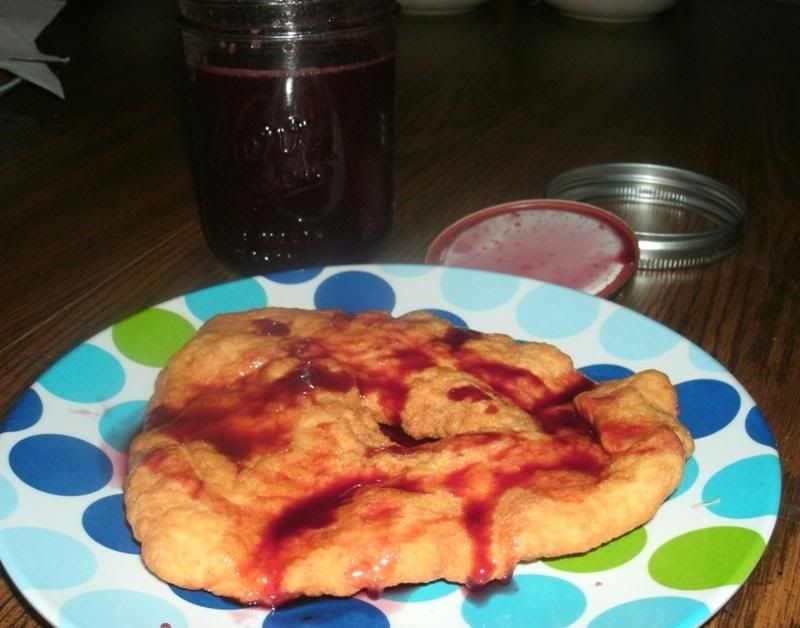 http://foodsoftheworld.activeb...bread_topic2472.html While going through some old clippings and recipes, I found instructions for making chokecherry syrup written by my father - who was born and raised in Killdeer, North Dakota; this recipe came from his mother - my grandmother - and lays out the procedure pretty well:
I’ll see if I am able to get out this weekend or next in order to gather some chokecherries; if I can, I’ll prepare a pictorial. | ||
|
| one of us |
For those interested, here is the distribution of the chokecherry:  The bushes are found along roadsides usually - or on hillsides...they look like this:  My youngest son and I picked a bunch of chokecherries on Saturday when we went to do some driving around and hiking in the mountains; I didn't have a camera, but they looked just like the un-picked ones pictured above, right down to the colours of the leaves. We picked about 12 cups altogether, which are currently in the freezer in a gallon-sized ziplock bag with all the air squeezed out. I think this should be enough to make at least 12 half-pints of syrup (if anyone knows or suspects otherwise, please let me know), so I will see about doing that this week. If we need more, I'll wait until I can pick some more somwtime in the next few days. | |||
|
| one of us |
Alrighty - for future reference, after setting aside the required chokecherries for my beer (1 generous cup) and my wine (3 pounds), I had exactly 6.5 pounds of chokecherries left for syrup. Being as careful as I could be with the process, I ended up with 5 pints, 1 half-pint and 1 quarter-pint (luckily, I had one such jar on-hand to use) of syrup, all of which are being processed now, as per the recipe above. There was just enough left over to sample a taste, and I must say that it turned out very well! We may or may not make more chokecherry syrup this year, depending on how things go, but we will, at least, have some to get us through the winter. | |||
|
| One of Us |
Thank you for the recipe. Our cherry picking time has passed. I'll have to wait till next year to try it. We do not have chokecherries here but we have lots of bitter cherry trees. More specifically we have Prunus emarginata var. mollis. It grows like a tree. We have some around here that are over 35' high, they reportedly can get up to 50' tall. The fruit is bitter and can act as a laxative. However, I have read that boiling the fruit destroys whatever causes that property. I found this video - "Black bear eating berries 30 feet up bitter cherry tree"  It is worth pointing out that the seeds, leaves, roots, twigs, and bark of ALL wild cherries, including choke, bitter, and eastern black, contain compounds with high levels of cyanide. Effects of eating those parts of the plant can vary from minor discomfort to serious illness and even death. I have read cautions about making sure all the seed is removed and ensuring seeds and seed parts do not get "processed" into foodstuffs made from the cherries. That said, I have also read that the cherries are excellent for making syrups, jellies, and compotes. What I was lacking was a good recipe -- till now! I can't wait to try it out, tas. Thanks again for sharing. . | |||
|
| one of us |
I was raised on chokecherry syrup and jelly and fondly recall picking buckets full of them each fall. Sure wish they were available here in the desert. Luckily, I can grow peaches, which I can and also use to make syrup, jam, and jelly. 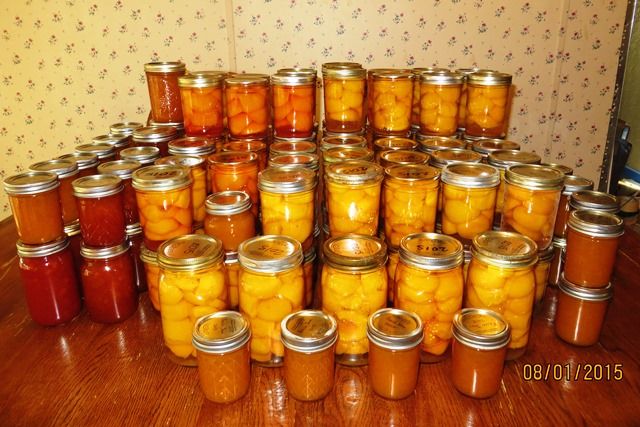 _____________________ A successful man is one who earns more money than his wife can spend. | |||
|
| one of us |
Good morning, guys - Grenadier, give it a go! It's as easy as can be, and has some great results. I don't know much about the variety that grows in your area, but I am guessing that this should work just as well with them, as long as the cherries are edible. Let me know how it goes ~ Desert Ram - those peaches look great! I love home-canned peaches, and I am guessing that that peach syrup is the bomb, as my kids would say. If we come across the opportunity for any fresh, orchard-grown peaches up here (a truck comes now and then, but not always), I will have to give that a try! | |||
|
| One of Us |
When I was a kid, my Mom used to make lots of choke cherry jelly. One batch didn't turn out right and got really thick. We used to stick a spoon into the jar and use it as an all day sucker. | |||
|
| One of Us |
Anyone have a good way to get rid of the seeds? Yes, Tas, they are just as edible as chokecherries.
. | |||
|
| one of us |
As for the seeds, there really isn't any way to do it except the way that Grandma did it, which is to cover the cherries with water, bring it all to a boil and simmer the mess until the chokecherries swell up and either burst or can be crushed with a wooden spoon. I simmered them for 30 minutes and used a potato masher when I did mine; with gentle application, it seemed to work pretty well. 45 minutes might have been a bit better, but I can't say for sure. Just be sure not to crush the seeds or get them mixed up into the juice/syrup/jelly etc. They should be strained out, along with the skins and pulp, after boiling the chokecherries. | |||
|
| One of Us |
I too, ate a lot of chokechery jam growing up in Utah. Good stuff! | |||
|
| Powered by Social Strata |
| Please Wait. Your request is being processed... |
|

Visit our on-line store for AR Memorabilia

